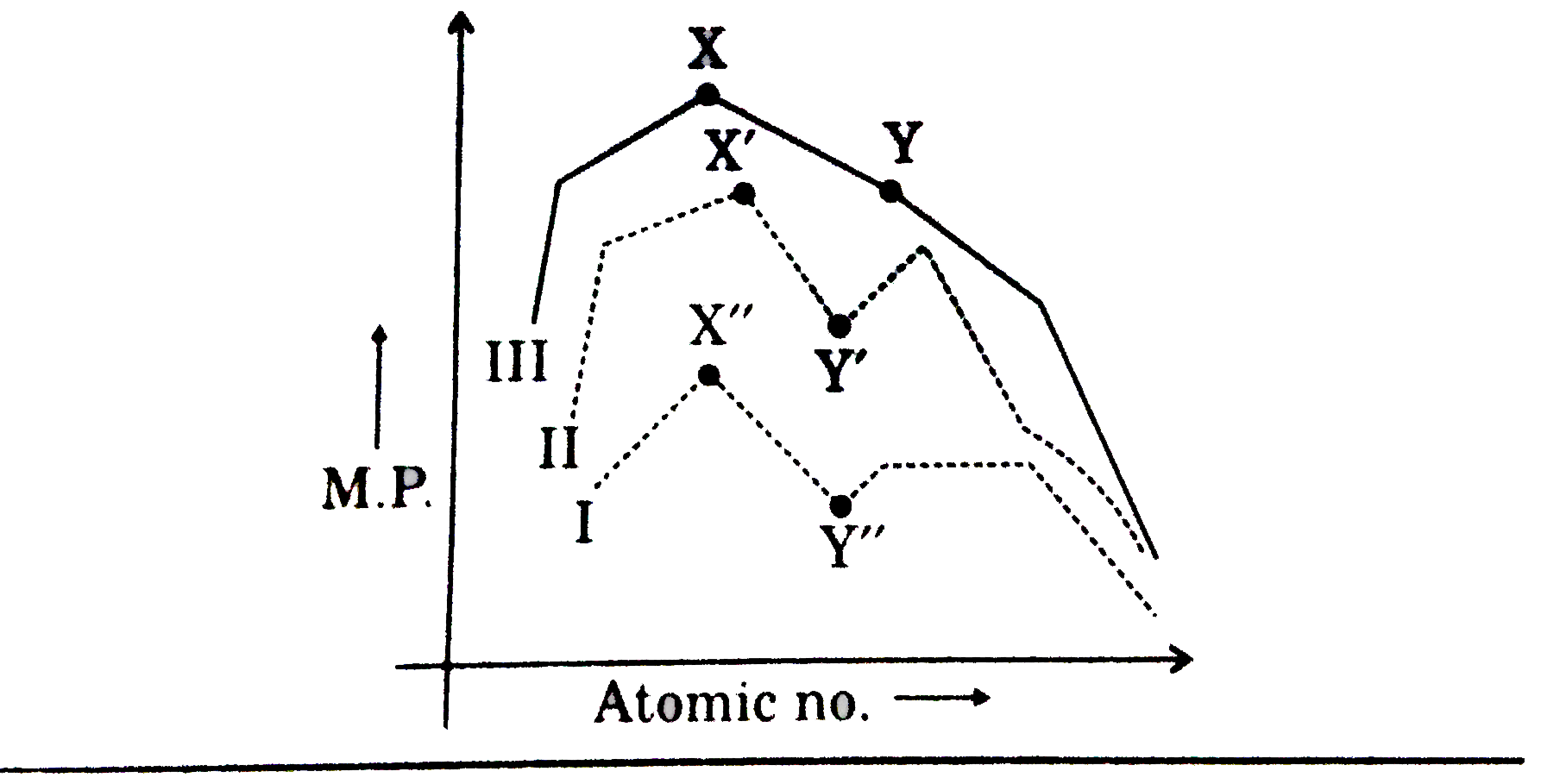Complete Solutions to Comprehension Type of chapter D-BLOCK ELEMENTS of Class 12 book with complete answers and questions
| Class 12 | CHEMISTRY |
| Chapter | D-BLOCK ELEMENTS |
| GRB PUBLICATION | Comprehension Type |
| Number Of Questions | 12 |
| Academic Year | 2023-24 |

Refer to the graph for trends in M.P. of transition elements of 3d,4d and 5d series.
Q. Choose the correct statement(s).
View Solution
Refer to the graph for trends in M.P. of transition elements of 3d,4d and 5d series.
Q. What does maxima at point 'X' indicate?
View Solution
Refer to the graph for trends in M.P. of transition elements of 3d,4d and 5d series.
Q. A metal having high boiling point:
View SolutionTransition metal and their compounds are used as catalysts in inductry and in biological systems. For example, in the contact process, vanadium compounds in the +5 state
It is though that the actual oxidation process takes place in two stages. in the first step,
In the second step.
The overall process is, of course, the sum of these two steps:
Q. Transition metals and their compounds catalyse reactions because:
View SolutionTransition metal and their compounds are used as catalysts in inductry and in biological systems. For example, in the contact process, vanadium compounds in the +5 state
It is though that the actual oxidation process takes place in two stages. in the first step,
In the second step.
The overall process is, of course, the sum of these two steps:
Q. During the course of the reaction:
View SolutionTransition metal and their compounds are used as catalysts in inductry and in biological systems. For example, in the contact process, vanadium compounds in the +5 state
It is though that the actual oxidation process takes place in two stages. in the first step,
In the second step.
The overall process is, of course, the sum of these two steps:
Q. Catalytic activity of transition metals depends on:
View SolutionTransition metal and their compounds are used as catalysts in inductry and in biological systems. For example, in the contact process, vanadium compounds in the +5 state
It is though that the actual oxidation process takes place in two stages. in the first step,
In the second step.
The overall process is, of course, the sum of these two steps:
Q. Which of the following ion involved in the above process will show paramagnetism?
View Solution(X) is very important laboratory reagent which is prepared by its naturally occurring ore which is called pyrolusite. Pyrolusite when fused with alkali in the presence of
Q. On small scale (X) is prepared by disproportionation of (Y) is acidic solution. which of the following is produced by disproportionation of (Y) in slightly alkaline solution.
View Solution(X) is very important laboratory reagent which is prepared by its naturally occurring ore which is called pyrolusite. Pyrolusite when fused with alkali in the presence of
Q. Select the correct statements.
View SolutionDue to availability of vacant orbitals of sufficiently low energy, d-block elements form complexes, d-block elements have different properties such as-catalytic, magnetic, alloy formation, interistitial compounds formation. Interistitial compounds are those compound in which small atoms like carbon and boron fits into interistices of d-block elements crystal. in interistitial compounds, there is no chemical bond formation. chemcial properties remain almost same but physical properties may change.
Q. Which of the property of interistitial compounds has the same behaviour as that of the elements?
View SolutionDue to availability of vacant orbitals of sufficiently low energy, d-block elements form complexes, d-block elements have different properties such as-catalytic, magnetic, alloy formation, interistitial compounds formation. Interistitial compounds are those compound in which small atoms like carbon and boron fits into interistices of d-block elements crystal. in interistitial compounds, there is no chemical bond formation. chemcial properties remain almost same but physical properties may change.
Q. Which of the following property gets decreased in interistitial compounds compared to that of the element?
View SolutionDue to availability of vacant orbitals of sufficiently low energy, d-block elements form complexes, d-block elements have different properties such as-catalytic, magnetic, alloy formation, interistitial compounds formation. Interistitial compounds are those compound in which small atoms like carbon and boron fits into interistices of d-block elements crystal. in interistitial compounds, there is no chemical bond formation. chemcial properties remain almost same but physical properties may change.
Q. Select correct statement.
View Solution
Comprehension Type questions and complete solutions for chapter D-BLOCK ELEMENTS of GRB CHEMISTRY (HINGLISH) of Class 12